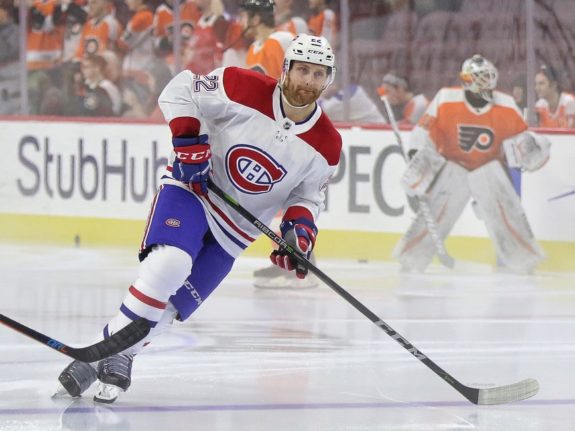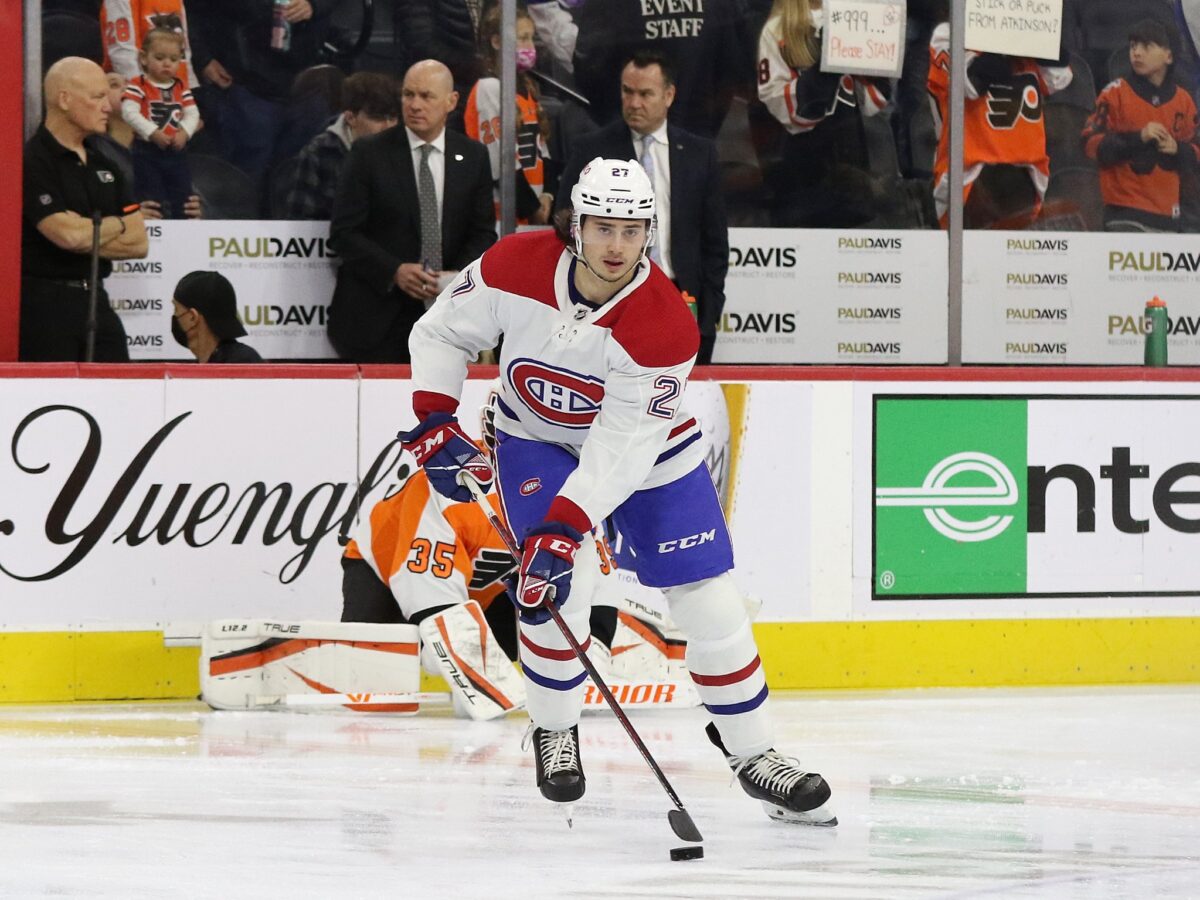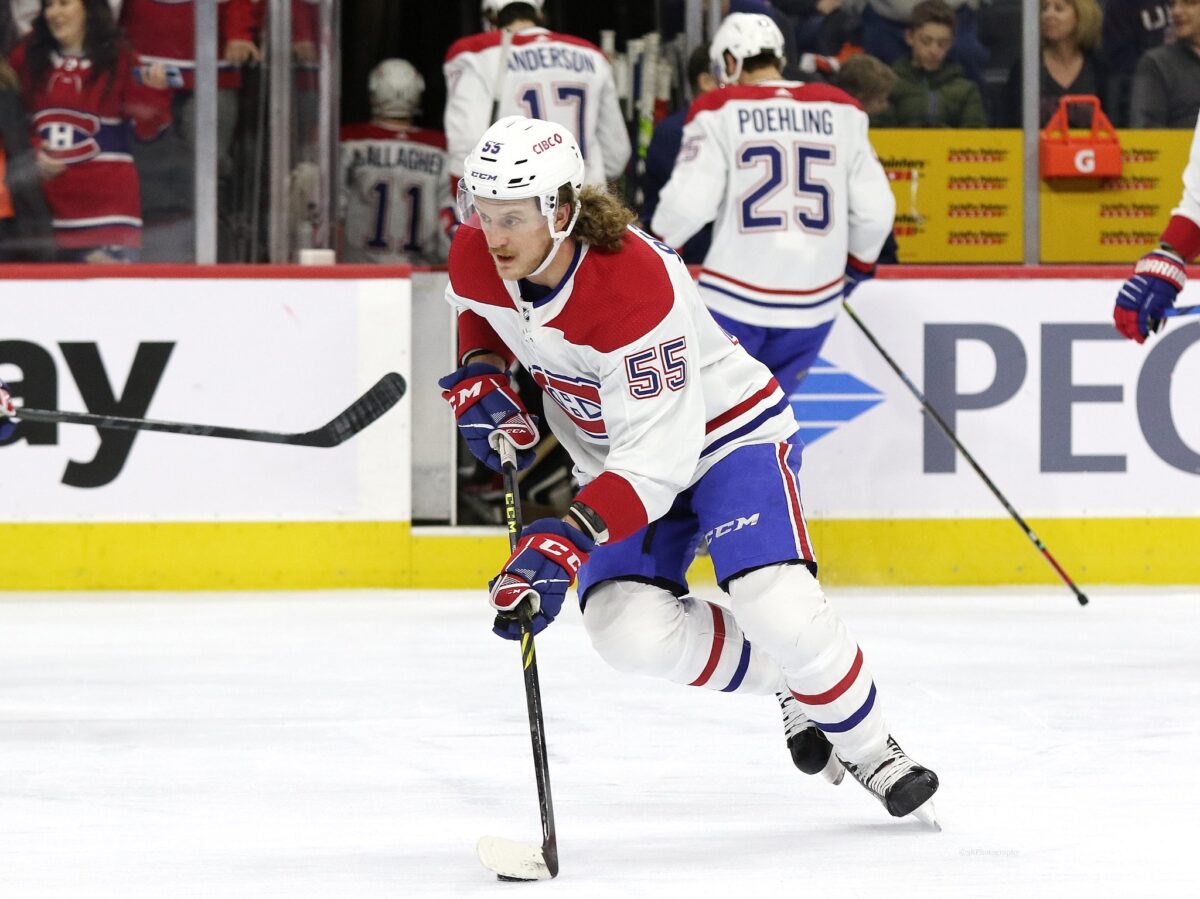Montreal Canadiens general manager Kent Hughes may not get any sleep this summer. He faces a busy offseason preparing for the NHL Draft, hosted in Montreal, where his team holds the first overall selection and 13 other picks. He also has several players in demand on the trade market and he needs to clear out salary-cap space to sign his restricted free agents (RFA) too.
While trades are the likeliest scenario to clear out cap space, there has been some dialogue amongst the fan base about using a buyout to help make room, but the question remains, does that make sense? Especially with regards to the long list of RFAs that need to be signed or allowed to leave as unrestricted free agents (UFA).
Let’s take a look at what a buyout could look like and what RFAs deserve to remain, play a long-term role or are only short-term solutions.
Possible Canadiens Buyouts
The buyout period begins the later of June 15 or 48 hours after the Stanley Cup Final ends. It concludes on June 30 at 5 pm EST. This won’t leave very much time for Hughes to make a decision, even if the Final ends quickly. As it stands, the Canadiens currently have a buyout on the books, two more years of Karl Alzner’s contract at $833,333. With dead cap space already, is a buyout the best use of his team’s assets and cap space?

One candidate could be Joel Armia. A buyout would cost on average $1.23 million on the cap until the 2027-28 season. However, doing it would cause more harm than good. Considering he has trade value, albeit not very high, the club is better off taking what little they can in return or even using one of their many draft picks to offload the entire contract than to buy him out.
If anyone is to be bought out to make cap space to help sign an RFA, then it would have to be Paul Byron. In the final year of a four-year contract that pays him an average of $3.4 million, his buyout would be short-lived at only two seasons. The cost-saving would be approximately $2 million for the 2022-23 season. With his second season at $933,334 for the buyout, it would be the cost of a seventh defenceman or 14th forward, something the team can live without for one season.
Related: 3 Canadiens Story Lines to Pay Attention to in 2022 Offseason
In the end, this plan would only be used as a last resort, as there are several roster players with trade value that could be sacrificed for futures and cap space. It makes very little sense for Hughes to use this option for cap savings.
Canadiens’ Restricted Free Agents
Some RFAs are guaranteed to be given a qualifying offer (QO) to retain their rights and continue negotiations with them. While others are likely to not have one tendered, thus allowing them to become UFAs.
Cayden Primeau
Primeau just completed an impressive American Hockey League (AHL) playoff performance, leading the Laval Rocket to Game 7 of the Eastern Conference Final, the furthest a Canadiens AHL affiliate has gone in over a decade. His .936 save percentage and 2.14 goals-against average in 14 playoff games salvaged a difficult season and showed the 22-year-old is still a potential NHL starting goaltender and needs more time in the AHL, supported by a solid lineup to develop.
Rem Pitlick
Picked up off waivers from the Minnesota Wild, Rem Pitlick was a rare bright spot in a disastrous season for the Canadiens. This waiver wire gem brought a positive attitude and a desire to play in Montreal. He has enough speed and grit to be an NHL regular, and scoring 26 points in 46 games played with the Habs demonstrates an offensive ability that would fit in well on a third line. Most of all, his versatility would be an asset for head coach Martin St. Louis as he can line up at any of the three forward positions.
Alexander Romanov
Of all the RFAs, Alexander Romanov is the most promising. After two full NHL seasons, he has grown into a top-four defenceman. The 22-year-old is one of the most physical defenders in the NHL, finishing the season with 227 hits in 79 games. That being said, he still needs to improve on his offensive game. His puck-moving skills in the defensive zone do allow for him to make an accurate pass or skate the puck out of danger, but once moving up ice, he isn’t as engaged offensively as he has shown he could be capable of.

The choice to offer him a long-term or bridge deal is not an easy one. If management sees him as a 30-point second-pairing defender, they could try to sign him long-term on a more team-friendly cap hit. Yet, unless Hughes can clear enough cap space, the team may be forced into a one or two-year bridge deal which could allow him to reach his potential in time for his next contract, which would then become much more expensive.
The Remaining Habs RFAs
Kyle Clague, Joel Teasdale and Josh Brook are three players who don’t seem to factor into the team plans. Clague was acquired off waivers from the Los Angeles Kings and the hope was his puck-moving skills demonstrated in lower levels would translate to the NHL, even in a bottom-pairing role. However, that didn’t turn out to be the case. Teasdale has been a good secondary scoring threat for the Laval Rocket, when healthy. His injury history is enough to give serious concerns about awarding another NHL contract, but an AHL deal could keep him in the system without using up one of the 50 contracts. Brooks, thanks to several injuries and a pandemic layoff, never seemed to find his place in the Canadiens’ system, ending up with the ECHL’s Trois-Rivières Lions.
Corey Schueneman has shown he deserves a new contract, as he displayed the ability to play at the NHL level and be a capable depth defenceman. He plays a steady, simple style of defence a coach can rely upon.
Nate Schnarr is an interesting case. With the loss of Cedric Paquette and the unknowns around the recovery of UFA Lukas Vejdemo, he would only be kept for center depth at the AHL level. His defensive abilities, faceoff skills and the solid offence would be enticing to keep for a team in need of veterans to mentor the new wave of prospects about to hit the shores of Laval.
Micheal Pezzetta not only has the best hockey hair on the roster, but he is a good candidate for a new deal. He was called up early in the season and provided a spark to the lineup when he did play. While he only had 11 points in 51 games, he provided grit and energy every time he was called upon. He was also willing to stand up for teammates and finish every check, making him a competent fourth-line NHL player.

Samuel Montembeault is a very complicated decision. He was able to start 38 games for Montreal, even stealing a couple of wins in that time. As a waiver pick-up from the Florida Panthers, he was essentially cannon fodder for a 32nd-place team. With the uncertainty around the return of Carey Price, it may be beneficial to sign him to a one-year deal. If Price returns, he can be placed on waivers to end up as a veteran mentor for Cayden Primeau.
Most of the RFAs that would remain don’t factor into the Canadiens’ long-term future, however, most of them do fill key roles in insulating young prospects or remain as capable fillers to keep the Canadiens and the Rocket as competitive teams while the rebuild continues to evolve.
The 2022-23 season is essentially already a transitional one due to the uncertainty surrounding Price’s health. While there will be more roster upheaval with trades, graduations from the AHL and additions through the draft, any decisions made must look to the future salary cap situation. Cap space will need to be cleared not just for this season’s RFAs, but also to ensure there is enough available to sign Cole Caufield to a long-term extension one year from now.
